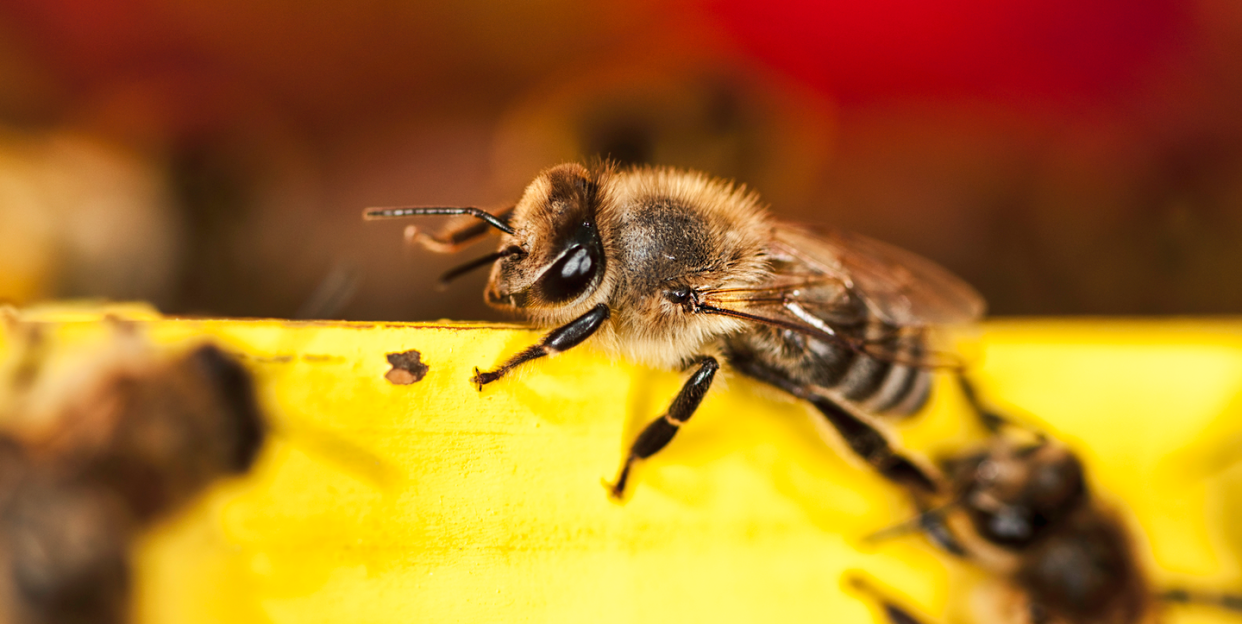Here’s Exactly What to Do if You Think Your Bee Sting is Infected

Even after the initial pain and discomfort of a bee sting subsides, there’s still a chance for more complications. Just like any other wound, bee stings can easily become infected—and they even might appear to be healing while bacteria stirs up trouble under the skin.
Although infections are rare, they can be serious. With the right precautions, though, you can significantly decrease your risk of dealing with one after a sting. Below, a doctor explains what you need to know.
First, how should you treat a bee sting? And how could an infection develop?
If you notice any shortness of breath, chest or throat tightening, or swelling away from the site of the sting, especially your tongue or lips, call 911 immediately. These are signs of anaphylaxis, which could be deadly without an emergency shot of epinephrine. Non-emergency stings can be treated differently.
According to board-certified allergist Lakiea Wright, M.D., medical director of Thermo Fisher’s Scientific ImmunoDiagnostics Division and associate physician at Brigham and Women’s Hospital, you should first remove the stinger with your fingernail or a piece of gauze. (Do not use tweezers, which can push more venom into your skin.)
Next, gently wash the area with soap and water. “Apply anything cold, like ice, for a few minutes to try to minimize the swelling,” Dr. Wright recommends. For pain, you can take OTC treatments like acetaminophen or ibuprofen.
Once the pain subsides, the sting could get itchy, which can be soothed with an oral antihistamine or 1% hydrocortisone cream. But if you keep scratching, “there can be a breakdown of the skin,” Dr. Wright notes. “That makes it easier for bacteria to permeate, which can lead to infection.”
How to tell if your bee sting is infected
It will start to look and feel worse. “You can get redness and swelling,” Dr. Wright explains. “It can also feel warm or tender to touch, and if your infection is advancing, you could even get pus in the area.” Other symptoms include redness that spreads on the skin, a fever and chills, or increased pain.
It’s important to note that redness, swelling, and pain are common symptoms after a bee sting, so wait a few days before you start suspecting infection. Dr. Wright notes that infections appear in as little as a few days, but they can also take weeks to present, leading you to believe that your wound is healing. In the weeks after a sting, monitor the site closely for any unusual changes in the area.
Are bee sting infections worse than other infections?
There’s no evidence that bee stings put you at risk for certain infections over others, according to a study by researchers at Johns Hopkins. But the study reports that the microscopic hairs on honey bees, the fact that the insects are often attracted to garbage, and the puncture wound from a sting all expose patients to bacteria that has the potential to cause severe infection. In other words, the nature of a bee sting automatically leaves you open to infection in addition to actions like scratching or rubbing the skin.
When to see a doctor about an infected bee sting
If you suspect your sting is infected, don’t try to fix it at home and seek medical care ASAP. “I wouldn’t recommend self-treating,” Dr. Wright warns. “It’s really important to contact your doctor and talk about [your] symptoms.”
They will determine what sort of treatment is appropriate, depending on whether you have a mild or severe infection. The solution, Dr. Wright says, will likely be a round of antibiotics—something you can’t whip up on your own.
Support from readers like you helps us do our best work. Go here to subscribe to Prevention and get 12 FREE gifts. And sign up for our FREE newsletter here for daily health, nutrition, and fitness advice.
You Might Also Like

